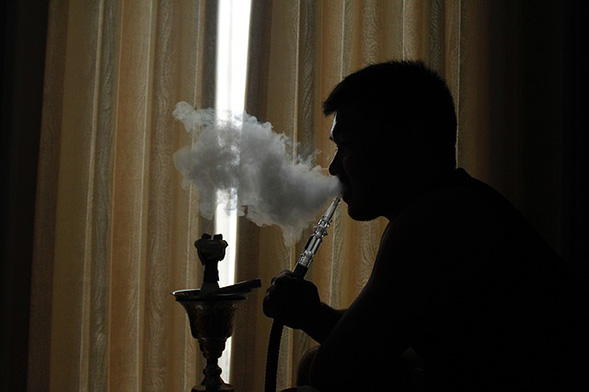The Hidden Chemicals in Hookah Tobacco Smoke
New research from SDSU scientist Nada Kassem shows that hookah users are exposed to the toxic respiratory irritant acrolein.

A new study out of San Diego State University’s Center for Behavioral Epidemiology and Community Health shows that burning hookah tobacco creates a dangerous byproduct: the chemical compound acrolein. Lead author Nada Kassem, a research scientist in SDSU’s Graduate School of Public Health, and her collaborators found that the use of tobacco in a hookah exposes smokers and non-smokers to potentially dangerous levels of the respiratory irritant that is believed to cause cancer and heart disease.
The study was funded by the American Cancer Society and was released in the journal Nicotine and Tobacco Research.
In this study, Kassem and her colleagues analyzed levels of 3-HPMA, a metabolite of acrolein, in the urine of 105 hookah smokers, and 103 non-smokers exposed to secondhand smoke at indoor hookah events where hookah tobacco was smoked exclusively. Participants provided urine samples the morning of and the morning after attending the event.
“We found that after spending an average of three hours at a hookah party, the levels of 3-HPMA in urine increased by an average of nearly 1.5 times in both those smoking hookah and those simply attending the event without smoking hookah,” said Kassem. “The acrolein levels were even higher in people who smoked hookah on a daily basis. They had acrolein levels four times higher than those found in a representative sample of non-tobacco users in the United States.”
In a previous study, Kassem found that children five years or younger who live in homes of hookah smokers were exposed to acrolein. For example, children of exclusive daily hookah smokers had 1.9 times higher levels of urinary 3-HPMA than their counterparts who live in non-smokers’ homes.
Kassem has been investigating the dangers of hookah smoke for several years and is part of a group of SDSU researchers who investigate the harmful effects of second- and thirdhand smoke. She previously published a study about benzene levels in those exposed to hookah.
Kassem has been awarded a $1.4 million grant from the National Institutes of Health to further research the dangers of hookah smoke and is currently in the process of collecting more data.
She says all of her current and previous research points to the one conclusion: Smoking hookah is not a safe alternative to smoking other forms of tobacco, and she suggests stricter regulations for hookah bars and events.
“Our results support regulating hookah tobacco products, including reducing additives that produce acrolein, including sugars that sweeten the smell and taste of the tobacco, and humectants, which are used to maintain the moisture of the tobacco,” said Kassem. “We also recommend posting health warning signs for indoor smoking in hookah lounges, and encouraging bans of indoor hookah tobacco smoking in private homes.”


